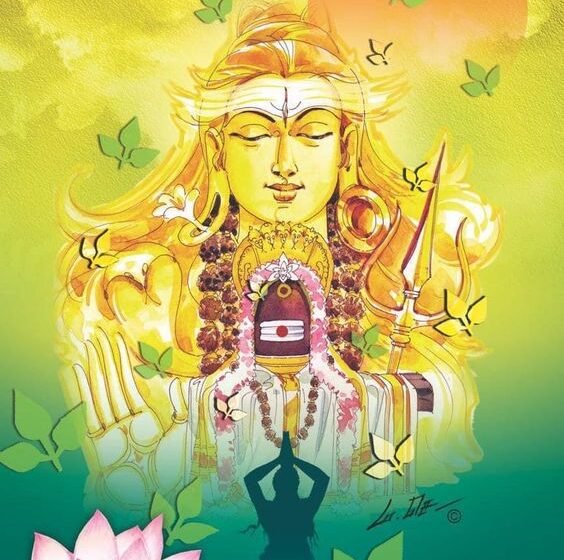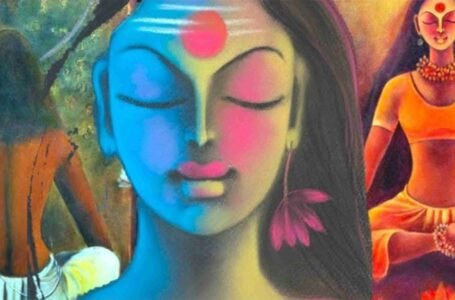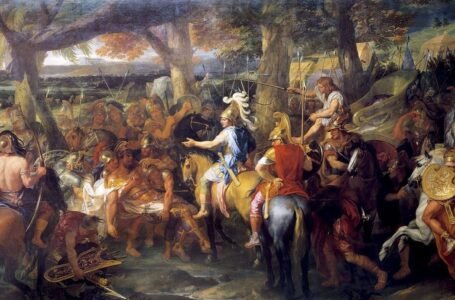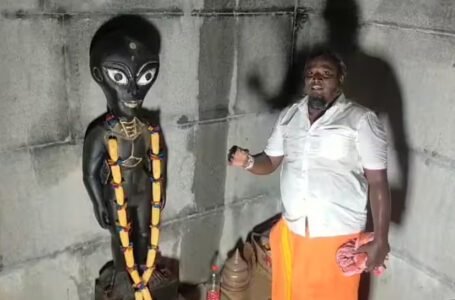Divine Narratives and Spiritual Insights: Exploring the Linga Purana’s Teachings

Linga Puran
The Linga Purana is one of the eighteen Mahapuranas dedicated primarily to Lord Shiva in his iconic form as the Linga. It is revered within Hindu tradition as a core Shaivite text, exploring the worship and symbolism of Shiva as the supreme deity. The text is foundational for those who follow Shaivism and highlights the omnipresence of Shiva and his transcendence beyond form, making the Linga a universal symbol of cosmic energy.

History
The Linga Purana is believed to have been written between the 5th and 10th centuries CE, but like many puranic texts it was written over years and material was gradually added to. It consists of approximately 11,000 verses and is divided into two sections, Purvabhaga and Uttarabhaga, covering different topics such as the creation of the universe, the powers of gods and sages, philosophical discussions, and the celebration and performance of the power and strength of Lord Shiva’s story.

Mythology
Birth of Nandi and the becoming of Nandikeshwara
The Linga Purana tells the story of Nandi, a child born to a sage named Shilada who wished for an immortal child. To fulfil his wish, Shilada performed great penance to Shiva, who granted his wish and gave him the child he named Nandi. The child’s birth brought joy to Shilada, who raised him with great care and affection. By five years old, Nandi was well-versed in the Vedas and holy scriptures.
One day, sages Maitreya and Varuna visited Shilada’s hermitage to meet the child. They blessed the child but mentioned that Nandi’s brilliance would be immortal but not his life. Shilada trembled and began to cry about his child’s life. Nandi asked about his distress and asked for his father’s attention.

Sage Shilada’s attention was distracted by the thoughts of Nandi’s death. Nandi decided to calm himself down and performed penance to Shiva. Shiva was delighted by Nandi’s devotion and appeared before him. Nandi prostrated at Shiva’s feet, and Shiva blessed him and made him the head of all the Ganas (attendants of God Shiva). Countless numbers appeared before Nandi and bowed to him, revealing that Nandi was his son and would be called Nandikeshwara, the Lord of joy from now on.
Dadhica and King Ksupa
Ksupa, a king of great splendour and son of Brahma, was the friend of leading sage Dadhica. A dispute arose between Kṣupa and Dadhica over who was better, a Kshatriya or a Brahmin. Kṣupa claimed that the king held the physical body of the eight guardians of the quarters, and therefore should not be dishonoured.

King Ksupa believed that the king was greater than a sage and should never be insulted by him. When Dadhica, son of Cyavana, heard this opinion, he struck Ksupa on the head with his left fist, believing in his supremacy as a brahmin. However, Ksupa hit Dadhica with his thunderbolt.
Bhargava then stitched the severed body of Dadhica and told him to worship Shiva, the lord of Devas, worthy of worship by Brahma and others. He explained that by the grace of the three-eyed lord, one can become immortal and resuscitate one to life.
Bhargava then revealed Shiva’s Mantra, which resuscitates one to life through actions, penance, study of the Vedas, yoga, and meditation. By repeating this Mantra, doing sacrifices, drinking water inspired by this mantra, and meditating on this Mantra, one can overcome fear of death. Dadhica propitiated Shiva through penance and attained adamantine bones, indestructibility, and absence of affliction.

Mountain Meru
The Jambu Dvipa has mountain Meru located in its centre, known for its numerous peaks filled with jewels. The mountain is rendered golden due to the auspicious contact with the body of Mahesh and is considered the abode of all Devas. It is surrounded by clusters of jewels and features many ornamental gateways bedecked in gold and jewels.
The eastern side of the mountain is the city of Indra, full of mansions and thronged by different groups of Devas. In the south-eastern side is Tejasvini, the city of the fire god, endowed with all means of pleasures. On the left side of the mountain is a palace of seven storeys, as clear as pure crystal, with the lord Shiva. The north-east has Nandi, his disciples, the leading Siddhas, Sanat, Sananda, and others reside there. Some parts of the mountain are the grounds for yoga and enjoyment of pleasures, with a splendid palace with seven storeys resembling the rising sun.

Worship
The Linga Purana prescribes specific rituals and practices for worshiping Shiva in his Linga form, emphasizing purification, meditation, and offerings. It details the significance of abhishekam with water, milk, and sacred herbs. These rituals are symbolic of purifying the self and aligning with divine energy. Additionally, the Purana instructs the use of mantras and hymns to invoke Shiva’s blessings and stresses the importance of bhakti for achieving spiritual progress.
It also goes on to prescribe different fasts or vrats for every month of the year. All the vrats are different and are to be followed in unique ways. It talks of his temples and how they must be built. There is also a lot of discussion on different kinds of charities that can help a person’s bhakti practices.

Scientific Aspects
Geography
It talks of the seven important mountains in each of the seven Dvipas. They extend straight in all directions and form the boundaries of the great continents. This Purana also goes into detail and talks of rivers that flow through India including their points of origin. There are mentions of the vegetation and the kings of fruits that grow in different places and how their properties are almost magical.
Astronomy
It says that the sun is fire and the moon is water, while the other five planets are known as lords. The sun is the source of the universe, including Devas, Asuras, and human beings. It is the soul of all luminaries and the universal refulgence. The sun is the original great deity, and everything originates from him and dissolves in him. It theorizes that the universe’s units of time begin and end in the sun, and without it, there is no reckoning of time. It mentions that the entire universe is sustained by the sun, and the constellations are called Nakshatras.

Legacy
The Linga Purana holds a significant place in Hinduism and Shaivism, especially in its portrayal of the Linga as both a symbol and an object of worship. Temples dedicated to Shiva across India embody these teachings, with rituals inspired by the Purana practiced to this day. The text’s teachings on devotion, ethics, and the cyclical nature of existence resonate with seekers worldwide, emphasizing spiritual growth and reverence for the divine.
Conclusion
The Linga Purana offers a profound exploration of Shiva’s nature and the universe, presenting a pathway to spiritual enlightenment through the worship of the Linga. Its talks of mythological stories, philosophical discussions, and worship practices offer a comprehensive guide for those devoted to Shiva. Not only does it hold religious significance, its inclusion of geography and astronomy makes it scientifically relevant too.


